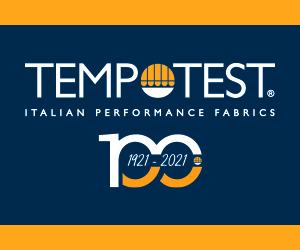Tchernov Reboots Business After Ruble Decline
March 16, 2017
FRANKFURT, Germany—To say that Archie Tchernov was under assault with the devaluing of the Russian Ruble is an understatement.
He shared his thoughts with F&FI during a Bru sponsored retirement party for Selwyn Neiman during the last Heimtextil fair in Frankfurt. Selwyn is the father of Gary and Jason Neiman, the two founders of Bru.  Gary Neiman, owner of Bru Textiles with good friend and customer Archie Tchernov
Gary Neiman, owner of Bru Textiles with good friend and customer Archie Tchernov
Tchernov clearly remembers that when the Russian Ruble dropped 200 percent over a three-month period in 2014, he had to reinvent himself or die. He chose to survive and worked diligently to that goal for the past three years.
Tchernov, based in Moscow, is the owner of Galleria Arben and Algemene, a Belgian Weaver. He was also forced to sell off his furniture stores in 2013; “We had 650 stores at that time. We sold them all.”
“During this period of the falling Ruble, we unfortunately bought goods for Galleria Arben in dollar terms but then sold them in Rubles. This meant that we lost money on every sale we made at Galleria Arben. In order to survive, we had to recall all of our sample-books from the market, replace thousands of samples and start over again with different products.”
Archie’s vendors also eventually worked out solutions for his financial problems and payment terms. He was able to crawl out of a deep pit!
Today, he is buying from 20 mills in China and offers sourcing services to other wholesalers and manufacturers.
In the process of the reinvention, Archie came up with some innovative perceptions and concepts he is trying to build upon:
“The middle man is getting cut out of the market.
Robots will replace labor.
Everything is done cheaper and directly. Images are getting easier to store. There are two worlds; before the internet and after the internet.
We are getting as much information in a week as we got 200 years ago in a year!
Digital weaving is a possibility in order to get closer to the end consumer in the same way it has worked with digital printing.
In this way, I want to empower the consumer to use our Algemene archive with the fabricator of the end product. There would be no waste or closeouts with jacquard weaving if we could do this.”
 Gary Neiman, owner of Bru Textiles with good friend and customer Archie Tchernov
Gary Neiman, owner of Bru Textiles with good friend and customer Archie Tchernov















